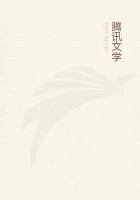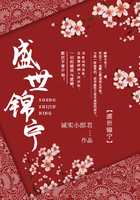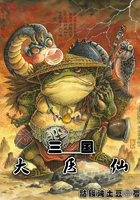sagittata), delights in moist but open meadows and marshes.The latter's long, arrow, or halberd-shaped leaves, usually entire above the middle, but slightly lobed below it, may rear themselves nine inches high in favorable soil, or in dry uplands perhaps only two inches.The flowering scapes grow as tall as the leaves.All but the lower petal of the large, deep, dark, purplish-blue flower are bearded.This species produces an abundance of late cleistogamous flowers on erect stems.These peculiar greenish flowers without petals, that are so often mistaken for buds or seed vessels; that never open, but without insect aid ripen quantities of fertile seed, are usually borne, if not actually under ground, then not far above it, on nearly all violet plants.It will be observed that all species which bear blind flowers rely somewhat on showy, cross-fertilized blossoms also to counteract degeneracy from close inbreeding.
The OVATE-LEAVED VIOLET (V.ovata), formerly reckoned as a mere variety of the former species, is now accorded a distinct rank.
Not all the blossoms, but an occasional clump, has a faint perfume like sweet clover.The leaf is elongated, but rather too round to be halberd-shaped; the stems are hairy; and the flowers, which closely resemble those of the arrow-leaved violet, are earlier; ****** these two species, which are popularly mistaken for one, among the earliest and commonest of their clan.The dry soil of upland woods and thickets is the ovate-leaved violet's preferred habitat.
In course of time the lovely ENGLISH, MARCH, or SWEET VIOLET, (V.
odorata), which has escaped from gardens, and which is now rapidly increasing with the help of seed and runners on the Atlantic and the Pacific coasts, may be established among our wild flowers.No blossom figures so prominently in European literature.In France, it has even entered the political field since Napoleon's day.Yale University has adopted the violet for its own especial flower, although it is the corn-flower, or bachelor's button (Centaurea cyanus) that is the true Yale blue.
Sprengel, who made a most elaborate study of the violet, condensed the result of his research into the following questions and answers, which are given here because much that he says applies to our own native species, which have been too little studied in the modern scientific spirit:
"1.Why is the flower situated on a long stalk which is upright, but curved downwards at the free end? In order that it may hang down; which, firstly, prevents rain from obtaining access to the nectar; and, secondly, places the stamens in such a position that the pollen falls into the open space between the pistil and the free ends of the stamens.If the flower were upright, the pollen would fall into the space between the base of the stamen and the base of the pistil, and would not come in contact with the bee.
"2.Why does the pollen differ from that of most other insect-fertilized flowers? In most of such flowers the insects themselves remove the pollen from the anthers, and it is therefore important that the pollen should not easily be detached and carried away by the wind.In the present case, on the contrary, it is desirable that it should be looser and dryer, so that it may easily fall into the space between the stamens and the pistil.If it remained attached to the anther, it would not be touched by the bee, and the flower would remain unfertilized.
"3.Why is the base of the style so thin? In order that the bee may be more easily able to bend the style.
"4.Why is the base of the style bent? For the same reason.The result of the curvature is that the pistil is much more easily bent than would be the case if the style were straight.
"5.Finally, why does the membranous termination of the upper filament overlap the corresponding portions of the two middle stamens? Because this enables the bee to move the pistil, and thereby to set free the pollen more easily than would be the case under the reverse arrangement."In high altitudes of New England, Colorado.and northward, where the soil is wet and cold, the pale lilac, slightly bearded petals, streaked with darker veins, of the MARSH VIOLET (V.
palustris), with its almost round leaves, may be found from May to June.All through the White Mountains one finds it abundant.
A peculiarity of the DOG or RUNNING VIOLET (V.Labradorica) is that its small, heart-shaped leaves are set along the branching stem, and its pale purple blossoms rise from their angles, pansy fashion.From March to May it blooms throughout its wide range in wet, shady places.Its English prototype, called by the same invidious name, was given the prefix "dog," because the word, which is always intended to express contempt in the British mind, is applied in this case for the flower's lack of fragrance.When a bee visits this violet, his head coming in contact with the stigma jars it, thus opening the little pollen box, whose contents must fall out on his head and be carried away and rubbed off where it will fertilize the next violet visited.
SEA LAVENDER; MARSH ROSEMARY; CANKER-ROOT; INK-ROOT(Limonium Carolinianum; Statice Limonium of Gray) Plumbago family Flowers - Very tiny, pale, dull lavender, erect, set along upper side of branches.Calyx 5-toothed, tubular, plaited; corolla of 5petals opposite as many stamens; 1 pistil with 5 thread-like styles.Scape: 1 to 2 ft.high, slender, leafless, much branched above.Leaves: All from thick, fleshy rootstock, narrowly oblong, tapering into margined petioles, thick, the edges slightly waved, not toothed; midrib prominent.
Preferred Habitat - Salt meadows and marshes.
Flowering Season - July-October.
Distribution - Atlantic coast from Labrador to Florida, westward along the Gulf to Texas; also in Europe.















